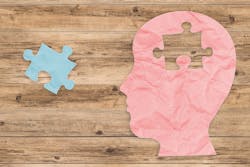National Survey on Drug Use and Health (NSDUH) results detailing mental illness and substance use levels in 2021
The U.S. Department of Health and Human Services’ (HHS) Substance Abuse and Mental Health Services Administration (SAMHSA) released the results of its annual National Survey on Drug Use and Health (NSDUH), which shows how people living in America reported about their experience with mental health conditions, substance use, and pursuit of treatment in 2021. The 2021 NSDUH national report includes selected estimates by race, ethnicity, and age group. It is the most comprehensive report on substance use and mental health indicators that SAMHSA has released to date.
Key findings from the 2021 NSDUH include:
Drug Use and Substance Use Disorder
- Among people aged 12 or older in 2021, 61.2 million people (or 21.9 percent of the population) used illicit drugs in the past year. The most commonly used illicit drug was marijuana, which 52.5 million people used. Nearly 2 in 5 young adults 18 to 25 used illicit drugs in the past year; 1 in 3 young adults 18 to 25 used marijuana in the past year.
- 9.2 million people 12 and older misused opioids in the past year.
- 46.3 million people aged 12 or older (or 16.5 percent of the population) met the applicable DSM-5 criteria for having a substance use disorder in the past year, including 29.5 million people who were classified as having an alcohol use disorder and 24 million people who were classified as having a drug use disorder.
- The percentage of people who were classified as having a past year substance use disorder, including alcohol use and/or drug use disorder, was highest among young adults aged 18 to 25 compared to youth and adults 26 and older.
- In 2021, 94% of people aged 12 or older with a substance use disorder did not receive any treatment. Nearly all people with a substance use disorder who did not get treatment at a specialty facility did not think they needed treatment.
Major Depressive Episodes (MDE) Among Adolescents
- In 2021, 1 in 5 adolescents had a major depressive episode in the past year. Of these, nearly 75 percent had symptoms consistent with severe impairment, which caused severe problems with their ability to do chores at home, do well at work or school, get along with their family, or have a social life.
- The prevalence of past year MDE among Black and Asian adolescents was lower compared to adolescents from most other racial/ethnic groups.
- More than half of youth with an MDE did not receive treatment in the past year.
Mental Illness Among Adults
- Nearly 1 in 4 adults 18 and older, and 1 in 3 among adults aged 18 to 25, had a mental illness in the past year.
- Adults with serious mental illness had higher rates of treatment compared to those with any mental illness. Despite having the highest rate of serious mental illness, people aged 18 to 25 had the lowest rate of treatment in comparison to adults in other age groups.
- White and Multiracial adults were more likely to receive mental health services in the past year than Black, Hispanic or Latino, or Asian adults.
Co-Occurring Substance Use Disorder with Any Mental Illness
- 13.5 percent of young adults aged 18 to 25 had both a substance use disorder and any mental illness in the past year.
- Nearly 1 in 3 adults had either a substance use disorder or any mental illness in the past year, and 46 percent of young adults 18-25 had either a substance use disorder or any mental illness.
- The percentage of adults aged 18 or older who met criteria for both a mental illness and a substance use disorder in the past year was higher among Multiracial adults than among White, Black, Hispanic or Latino, or Asian adults. Asian adults were less likely to have had both AMI and a substance use disorder in the past year compared with adults in most other racial or ethnic groups.
Serious Thoughts of Suicide, Suicide Plans, and Suicide Attempts
- 12.3 million adults aged 18 or older had serious thoughts of suicide in the past year, 3.5 million made suicide plans, and 1.7 million attempted suicide.
- Hispanic or Latino adults were more likely than White or Asian adults to have attempted suicide in the past year, and Black adults were more likely than Asian adults to have they attempted to suicide in the past year.
Recovery
- 7 in 10 (72.2 percent or 20.9 million) adults who ever had a substance use problem considered themselves to be recovering or in recovery.
- 2 in 3 (66.5 percent or 38.8 million) adults who ever had a mental health issue considered themselves to be recovering or in recovery.

